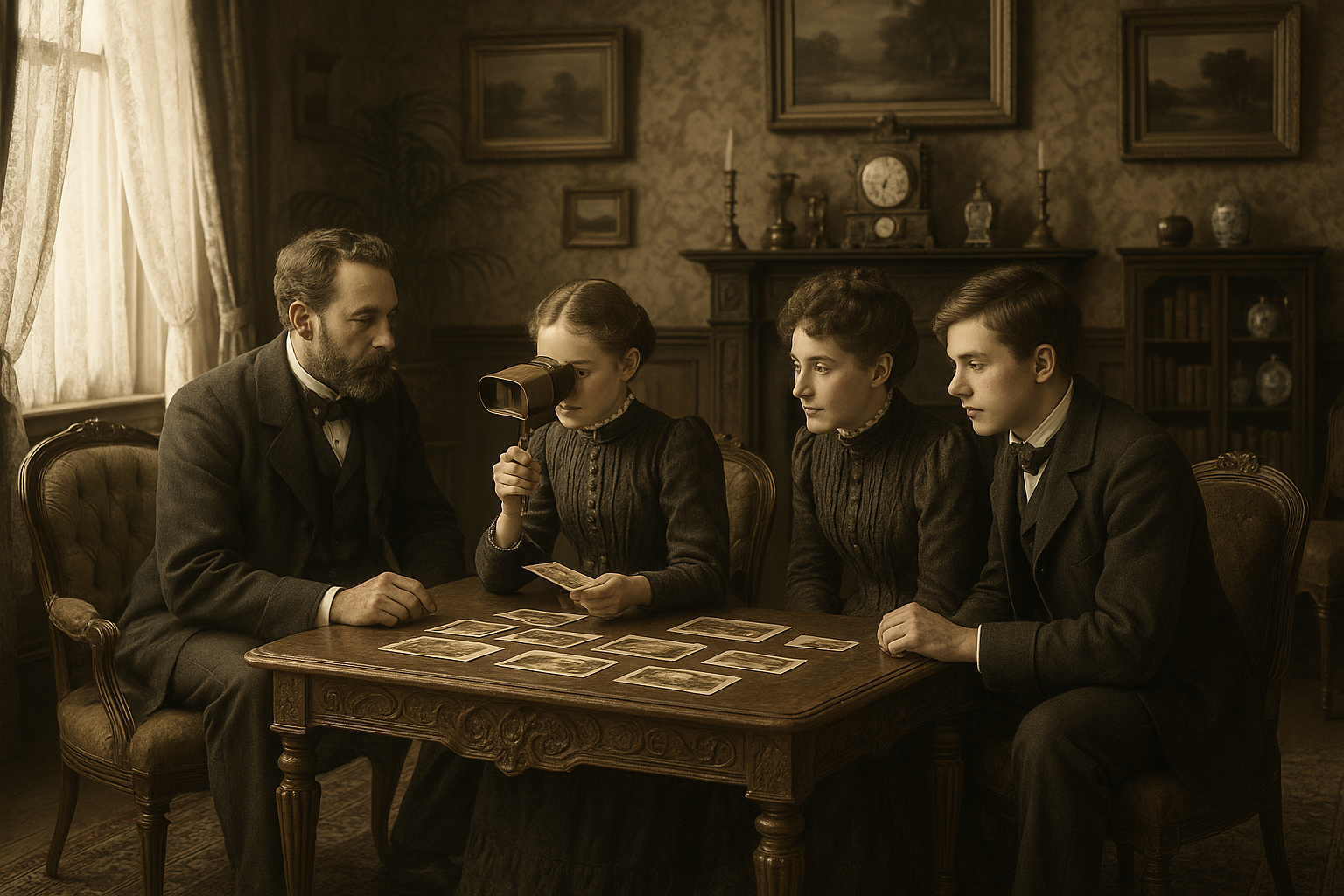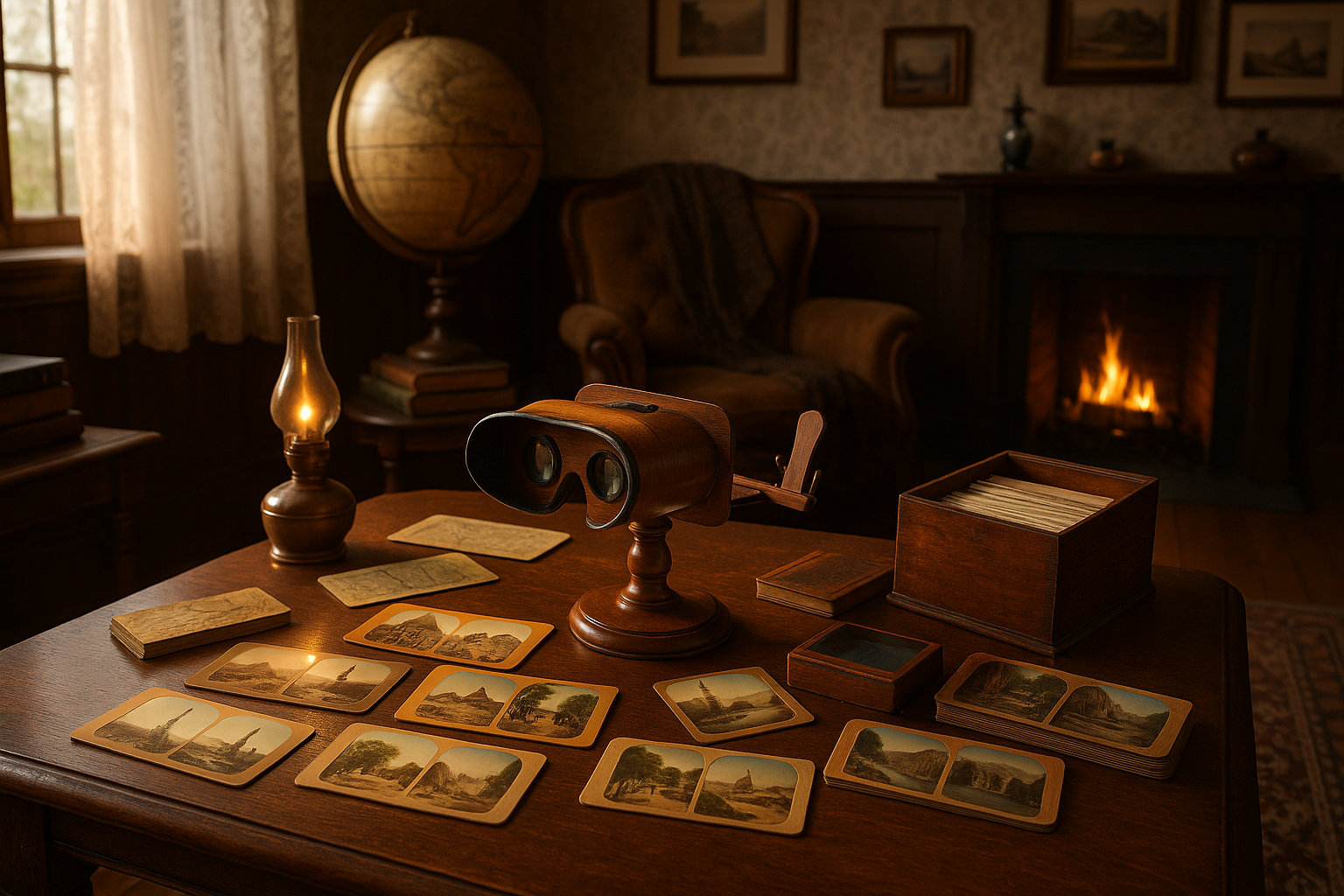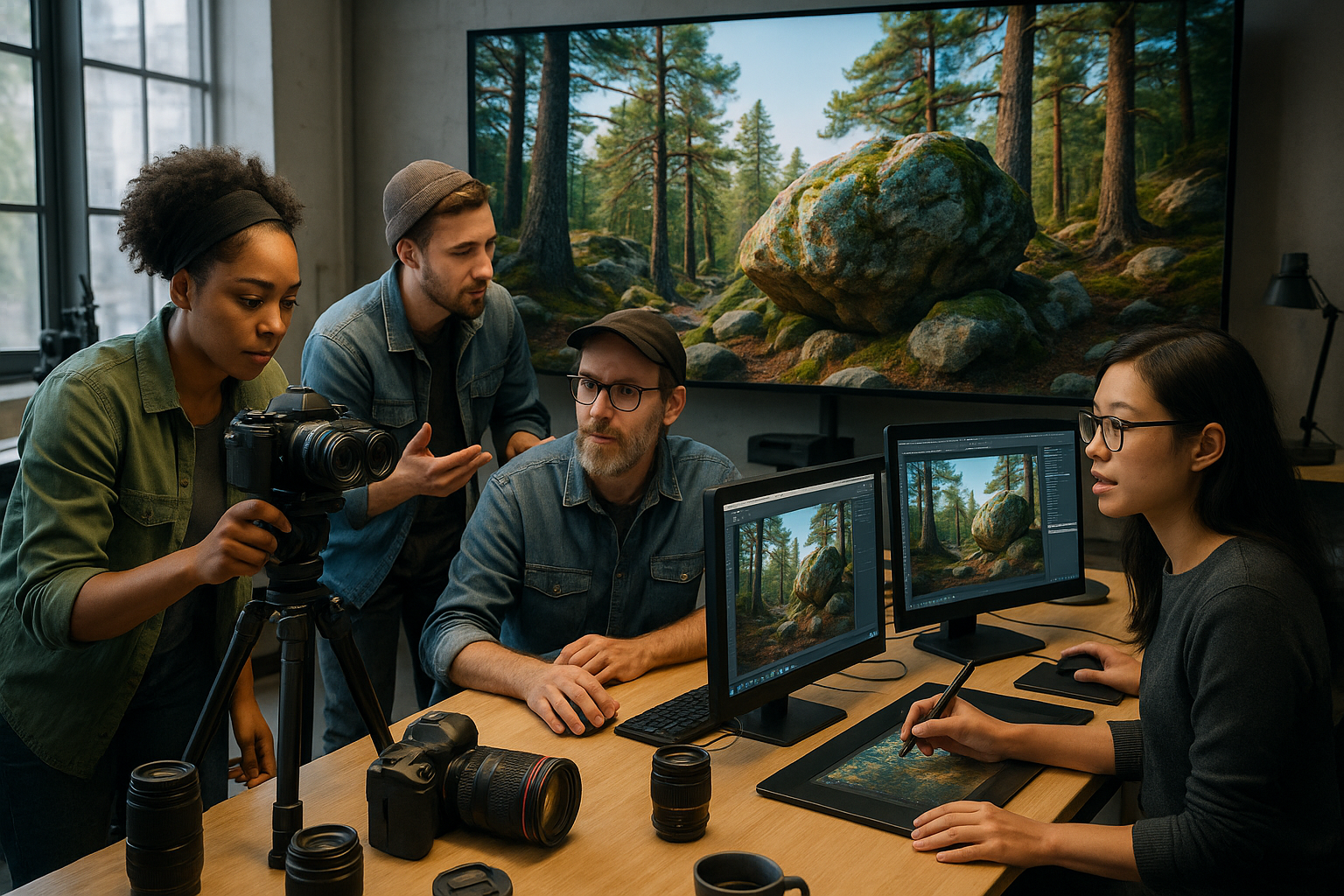Visual perception shapes how artists interpret reality and translate it into compelling works. Understanding this connection unlocks deeper creative potential and transforms ordinary observation into extraordinary art.
🎨 The Foundation of Visual Perception in Artistic Practice
Visual perception forms the cornerstone of artistic expression, serving as the bridge between what exists in the physical world and what emerges on canvas, paper, or digital screen. Artists throughout history have grappled with the complexities of how we see, process, and interpret visual information. This cognitive process involves far more than simply recording what appears before our eyes—it requires understanding light, shadow, spatial relationships, color theory, and the psychological mechanisms that govern human sight.
The optical room, whether literal or metaphorical, represents a controlled environment where artists can experiment with perception. These spaces allow creators to manipulate variables like lighting conditions, viewing angles, and atmospheric effects to better understand how visual information reaches the observer’s consciousness. Renaissance masters like Leonardo da Vinci utilized camera obscura rooms to study perspective and light behavior, effectively creating the first optical laboratories for artistic research.
Modern neuroscience has revealed that perception is not passive reception but active construction. Our brains constantly predict, fill gaps, and interpret visual data based on experience and context. Artists who master this understanding can deliberately play with viewer expectations, creating works that challenge, surprise, or comfort through strategic manipulation of perceptual cues.
Historical Perspectives on Optical Exploration
The relationship between artists and optical science stretches back centuries, with each era contributing unique insights to our understanding of visual perception. During the Renaissance, artists became amateur scientists, dissecting eyes, studying geometry, and developing mathematical systems to represent three-dimensional space on two-dimensional surfaces. This period marked the birth of linear perspective, revolutionizing Western art forever.
The camera obscura became an invaluable tool for artists seeking to understand optical principles. This darkened room with a small aperture projected inverted images of the outside world onto opposite walls, revealing fundamental truths about light behavior and image formation. Artists like Vermeer and Canaletto likely used these devices to achieve their remarkable precision and atmospheric effects.
In the 19th century, Impressionists took optical exploration outdoors, studying how natural light transformed colors throughout the day. Claude Monet’s series paintings of haystacks, cathedrals, and water lilies documented how changing light conditions altered perception of the same subject. These artists understood that color exists not in objects themselves but in the light reflecting from them—a revolutionary perceptual insight.
The Scientific Revolution in Color Theory
The development of color theory represented a crucial intersection between art and optical science. Isaac Newton’s experiments with prisms demonstrated that white light contains all colors, fundamentally changing how artists approached their palettes. Later, chemists like Michel Eugène Chevreul discovered principles of simultaneous contrast, showing how adjacent colors affect each other’s perception.
Georges Seurat applied these scientific principles directly to canvas through Pointillism, placing tiny dots of pure color side by side and allowing the viewer’s eye to optically mix them. This technique demonstrated profound understanding of both optical physics and perceptual psychology, showing that perception happens as much in the mind as in the eye.
⚡ Contemporary Artists Pushing Perceptual Boundaries
Today’s artists continue exploring visual perception with unprecedented tools and theoretical frameworks. James Turrell creates entire architectural spaces dedicated to light and perception, transforming viewers into active participants in perceptual experiences. His Skyspaces and Ganzfeld pieces eliminate reference points, forcing visitors to confront the raw mechanics of seeing itself.
Olafur Eliasson constructs installations that make perception’s mechanisms visible. His famous Weather Project at Tate Modern used mirrors, mist, and monofrequency light to create an artificial sun, revealing how environmental conditions shape visual experience. These works don’t just depict perception—they become perception experiments where the artwork only exists in the viewer’s sensory processing.
Digital artists now manipulate perception through virtual and augmented reality technologies. These immersive environments offer unprecedented control over perceptual variables, allowing artists to craft experiences impossible in physical space. The optical room has evolved from a darkened chamber to a computational space where perception itself becomes programmable.
Optical Illusions as Artistic Strategy
Artists like Bridget Riley and Victor Vasarely pioneered Op Art, using geometric patterns to create powerful optical effects. Their works generate apparent movement, vibration, and dimensional shifts through carefully calculated visual stimuli. These pieces demonstrate that perception is never neutral—it’s an active process vulnerable to systematic manipulation.
Understanding perceptual phenomena like afterimages, Moiré patterns, and figure-ground ambiguity allows contemporary artists to create works that physically affect viewers. Some pieces can induce mild disorientation or visual fatigue, proving that art can generate genuine physiological responses beyond emotional or intellectual reactions.
🔍 Training the Artist’s Eye: Practical Approaches
Developing superior visual perception requires deliberate practice and systematic training. Master artists throughout history have employed specific exercises to sharpen their observational skills, moving beyond casual looking to intensive seeing. This distinction separates amateur practitioners from professionals who can capture nuanced visual information invisible to untrained eyes.
Contour drawing exercises force artists to observe edges and boundaries with extreme precision. By drawing without looking at the paper, artists must translate visual information directly through hand movements, building stronger neural pathways between observation and execution. This practice reveals how much we typically rely on symbolic knowledge rather than direct perception.
Value studies help artists perceive the full range of light and dark tones present in any scene. Most beginners compress values into a narrow middle range, missing the dramatic contrasts that create form and atmosphere. Systematic practice with grayscale exercises expands perceptual sensitivity to subtle tonal variations.
Color Perception Development
Color perception training involves moving beyond naming colors to perceiving their actual qualities. Artists learn to identify color temperature (warm versus cool), saturation (intensity), and value (lightness) as separate variables. This analytical approach reveals that what we casually call “blue” might contain thousands of perceptually distinct variations.
Mixing exercises where artists match specific colors from observation develop crucial perceptual feedback loops. The process of adjusting mixtures based on comparison trains the eye to detect increasingly subtle differences. Over time, this practice builds an internalized color vocabulary that becomes automatic during creative work.
The Psychology Behind Visual Processing
Understanding perceptual psychology transforms how artists approach their craft. Gestalt principles explain how viewers organize visual information into meaningful patterns. Concepts like proximity, similarity, continuity, and closure govern how separate elements unite into perceived wholes. Artists who understand these principles can guide viewer attention and create powerful compositional structures.
The phenomenon of perceptual constancy reveals that our brains maintain stable object perception despite changing viewing conditions. A white object appears white whether viewed in bright sunlight or dim interior light, even though the actual light reflecting from it varies dramatically. Artists must learn to override these automatic corrections to accurately depict optical reality rather than conceptual knowledge.
Selective attention and inattentional blindness demonstrate that we see far less than we think. Famous experiments like the “invisible gorilla” study show that focused attention on one aspect of a scene can render other elements completely invisible. Artists exploit these perceptual limitations strategically, directing viewer focus through compositional choices and visual emphasis.
Cultural Influences on Perception
Visual perception isn’t purely biological—cultural factors significantly shape how we interpret visual information. Studies show that people from Western cultures tend to focus on foreground objects, while those from East Asian cultures attend more to contextual relationships and backgrounds. These differences emerge from lifelong exposure to different visual environments and aesthetic traditions.
Artists working across cultures must consider these perceptual variations. What reads as harmonious balance in one visual tradition might appear static in another. Color associations, symbolic meanings, and compositional preferences all vary culturally, requiring artists to develop cross-cultural perceptual literacy.
💡 Creating Your Personal Optical Laboratory
Establishing a dedicated space for perceptual exploration accelerates artistic development. This optical room needn’t be elaborate—even a corner with controlled lighting can become a laboratory for visual experiments. The key elements include adjustable lighting, neutral backgrounds, and space to observe subjects from multiple angles and distances.
Natural light studios with north-facing windows provide consistent illumination without direct sunlight’s harsh contrasts. However, artificial lighting offers greater control over variables. Combining daylight-balanced LED lights with dimmers and directional controls allows artists to simulate various lighting conditions and study their perceptual effects.
Documentation tools extend the optical room’s utility. Cameras capture fleeting lighting effects for later study, while mirrors enable artists to view their work with fresh eyes. Some artists use reduction screens (dark glass or smartphone camera apps set to grayscale) to isolate value relationships by temporarily eliminating color’s distraction.
Digital Tools for Perceptual Training
Technology offers powerful resources for developing visual perception skills. Digital applications can isolate color channels, convert images to grayscale, or display color values numerically. These tools provide objective feedback on perceptual judgments, revealing where intuition aligns with or deviates from optical reality.
Artists can use photo editing software to analyze masterworks, separating value structures from color choices and studying compositional armatures. These digital dissections reveal techniques invisible in finished works, offering insights into how master artists constructed their perceptual effects.
🎯 Applying Perceptual Mastery to Creative Work
Theoretical knowledge transforms into artistic power only through consistent application. Artists must translate perceptual insights into mark-making decisions, color choices, and compositional structures. This integration happens gradually as conscious techniques become automatic skills embedded in creative intuition.
Working from life remains essential for perceptual development despite photography’s convenience. Direct observation involves continuous perceptual adjustment as angles, distances, and lighting shift slightly during extended sessions. This dynamic quality builds adaptive perceptual skills that photographs cannot provide.
Series work allows artists to focus on specific perceptual variables while controlling others. Creating multiple studies of the same subject under different lighting conditions isolates light’s effects. Painting the same composition in different color schemes reveals how hue choices affect mood and spatial perception. This systematic approach yields insights impossible to gain through isolated works.
Balancing Perception and Expression
Masterful artists balance optical accuracy with expressive intent. Photorealism represents one endpoint—faithful reproduction of visual information—but artists across styles benefit from perceptual understanding even when deliberately departing from optical truth. Knowing the rules enables meaningful rule-breaking rather than accidental errors.
Expressionist, abstract, and non-representational artists apply perceptual principles to pure visual elements. Understanding how colors interact perceptually allows abstract painters to create depth without representation. Knowledge of how values create form enables sculptors to predict how their work will read under various lighting conditions.
The Evolving Future of Visual Perception in Art
Emerging technologies promise to revolutionize how artists understand and manipulate visual perception. Virtual reality enables creation of impossible perceptual experiences, while artificial intelligence reveals patterns in visual data invisible to human observation. These tools don’t replace human perception but augment and extend it into new territories.
Neuroscience continues revealing perception’s mechanisms at unprecedented resolution. Brain imaging studies show exactly which neural pathways activate during aesthetic experiences, potentially informing more effective artistic strategies. As we understand perception’s biological basis more completely, artists gain new frameworks for thinking about their craft.
The democratization of perceptual education through online resources means aspiring artists worldwide can access training once limited to prestigious academies. Video demonstrations, interactive exercises, and virtual critiques bring optical training to anyone with internet access, potentially unleashing waves of perceptual innovation from diverse perspectives.
🌟 Transforming Sight Into Insight
Mastering visual perception elevates artistic practice from copying appearances to understanding visual truth. This journey requires patience, systematic practice, and willingness to question comfortable assumptions about seeing. Artists who commit to perceptual development discover that the world contains infinite visual richness previously invisible to their untrained eyes.
The optical room—whether physical space, mental framework, or metaphorical approach—provides structure for this exploration. By creating controlled conditions for perceptual experiments, artists accelerate their development and deepen their understanding of how vision actually works versus how we assume it works.
Ultimately, perceptual mastery serves artistic vision rather than replacing it. Technical skill in seeing provides the vocabulary for expressing personal perspective, emotional truth, and conceptual ideas. The most compelling art combines optical understanding with unique creative vision, using perceptual knowledge as foundation rather than limitation.
As you develop your perceptual abilities, remember that this journey never truly ends. Even master artists continue discovering new aspects of seeing throughout their careers. Each artwork becomes both expression and experiment, simultaneously sharing vision with viewers and expanding the artist’s perceptual capabilities. This continuous growth keeps artistic practice perpetually fresh and endlessly fascinating.
Toni Santos is a visual historian and artisan whose creative lens is captivated by the forgotten marvels of antique optical devices. Through his thoughtful storytelling, Toni revives the instruments that once transformed light into wonder—camera obscuras, magic lanterns, kaleidoscopes, and other ingenious tools that shaped our earliest visual imaginations.
His journey is rooted in a fascination with how humans have long sought to bend, reflect, and reveal the unseen. Whether tracing the mechanical poetry of 19th-century projectors or illustrating the tactile elegance of early lenses, Toni’s work invites us to see vision itself as an evolving art form.
Blending handcrafted design with historical inquiry, Toni brings to life the material soul of these devices—celebrating not just how they functioned, but what they meant. His creations and curated stories illuminate a world where science, illusion, and beauty were intricately linked through glass and brass.
As the curator of Vizovex, Toni shares detailed studies, reconstructed artifacts, and immersive content that help others rediscover the origins of visual technology and the magic of analog perception.
His work is a tribute to:
The craftsmanship behind early visual instruments
The wonder of seeing through the eyes of another century
The intersection of optics, art, and imagination
Whether you’re a collector, a designer, or someone drawn to the lost poetry of vision, Toni welcomes you into a world where light is a storyteller—one prism, one lens, one forgotten invention at a time.





